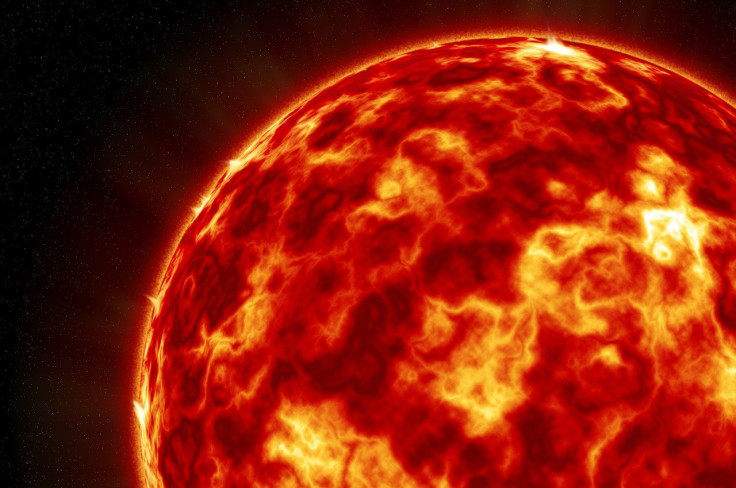Comet 3I/ATLAS May Be 10 Billion Years Old — Older Than the Sun Itself
Scientists using the Ōtautahi–Oxford model estimate the comet is more than seven billion years old

The cosmos is full of surprises, but few are as mind-boggling as the latest chatter about Comet 3I/ATLAS. Imagine an object moving through space that predates our own star.
Current discussions suggest this cosmic snowball might be a staggering 10 billion years old — making it older than the Sun itself. This ancient wanderer offers a unique glimpse into the earliest history of our galactic neighbourhood.
The Ancient Visitor Sparks Chatter
3I/ATLAS, the interstellar comet currently moving through the Sun's inner region, is back in the spotlight thanks to an X post from Astronomy Vibes (@AstronomyVibes) that has fuelled both interest and guesswork.
The post contains a short, repeating film clip titled 'JAXA Sun Tracker Cam 04 – enhanced contrast', which captures a dim line of illumination passing over the Sun's range of vision. The writing at the frame's base states, 'Object 3I/ATLAS trails – 29/10/2025'.
The video plays alongside a strange, low-frequency hum — a sound like far-off radio buzzing or the static of deep space — mixed with faint, mechanical noises. Even though the sound is probably synthetic, it stresses the clip's disturbing feel, creating the image of something ancient gliding through the vast quiet of space.
🚨 3I/ATLAS Ancient Ice from Another Star!
— Astronomy Vibes (@AstronomyVibes) October 30, 2025
Comet 3I/ATLAS may be over 10 billion years old, carrying frozen material from before our Sun existed.#3IATLAS #spacemystery #interstellarobject pic.twitter.com/emuXq5X8O3
Astronomy Vibes did not include narration with the update. Yet, its timing and presentation propose a significant question: What sort of traveller crosses the Sun's line of sight, appearing to predate the star itself?
The mood of the post, together with its uncluttered style, instils a feeling of wonder — and slight discomfort — as the equipment traces a small point that, according to existing calculations, the comet might have been roaming the galaxy for close to 10 billion years.
The X post features a caption over the top that says: 3I/ATLAS Ancient Ice from Another Star! 'Comet 3I/ATLAS may be over 10 billion years old, carrying frozen material from before our Sun existed.' The statement captures the growing interest in this rare visitor.
More Than Seven Billion Years Old
This speculation mirrors reports by BBC News, Sky at Night Magazine, and New Scientist, which described 3I/ATLAS as potentially the most ancient comet yet detected.
In July, the New Scientist reported that astronomers monitoring an interstellar object moving through the solar system believe it originated from a star at least 8 billion years old — nearly double the age of our Sun.
The enigmatic object known as 3i ATLAS has captured global attention, with some theorists suggesting it is not merely a fragment drifting through space, but a colossal spaceship of unimaginable antiquity. According to these ideas, the vessel could have been launched billions of… pic.twitter.com/rFCOsjOrVa
— Astronomy Vibes (@AstronomyVibes) October 6, 2025
This theory aligns with an article published in September by BBC News and Sky at Night Magazine, which suggests that 3I/ATLAS may be the most ancient comet ever observed.
The publication references Matthew Hopkins, the main author of research aimed at defining the comet's likely lifespan. 'Rather than the quiet Wednesday I had planned, I woke up to messages like '3I!!!!!!!!!!', said Hopkins.
The Ōtautahi–Oxford Model Reveals the Truth
The scientist and his colleagues created the Ōtautahi–Oxford model to forecast the characteristics of interstellar objects using their orbits and likely starting points.
Based on the team's model, 3I/ATLAS is estimated to be over 7 billion years old, making it the oldest known comet identified today. Hopkins went on to say, 'It's a fantastic opportunity to test our model on something brand new and possibly ancient'.
'We're all very excited by 3I/Atlas. I've just finished my PhD, where I spent four years predicting the discovery of [more] interstellar objects, and then for the first time in my studies, we found one', Hopkins told BBC News in July.
Hopkins suggests the comet began its journey in the Milky Way's 'thick disk'. This region is home to a collection of old stars that circle both above and below the main section where the Sun and the majority of other stars are found.
A Spectacle of Primordial Ice
The researchers propose that since 3I/Atlas likely developed near an ancient star, it contains a large amount of water ice. Consequently, when it moves closer to the Sun later in 2025, the solar energy will warm the object's exterior, causing bursts of vapour and dust. This process might then produce a glowing tail.
The researchers arrived at their conclusions using the model that Hopkins created. Prof Chris Lintott, a co-author of the research, stated, 'This is an object from a part of the galaxy we've never seen up close before. We think there's a two-thirds chance this comet is older than the solar system, and that it's been drifting through interstellar space ever since'.
Hopkins explains that interstellar objects form near other stars at the beginning of a star's lifecycle. 'This connection back to their parent stars means that we can look at the stellar population of the Milky Way.'
Older Than Our Sun: A Galactic Time Capsule
Whether 3I/ATLAS is the over 10-billion-year-old relic suggested by social media chatter or the seven-billion-plus-year-old wanderer detailed by the science team, one truth remains, this is no ordinary visitor. Every burst of vapour and dust it releases confirms its role as a cosmic messenger, offering us material proof of the galaxy's history long before our Sun ignited.
© Copyright IBTimes 2025. All rights reserved.





















